.Msop file extension is an extension that is used by the latest version of STOP ransomware. Ransomware is malware created by criminals to encrypt files on the victim’s computer. Msop creators demand a ransom for a key and a decryptor, which are necessary to decrypt the affected files. Fortunately, a team of security researchers has developed a free decryptor that can help decrypt .msop files for free. There are also several alternative methods to restore encrypted files to their unencrypted state. To learn more about decrypting and restoring files, scroll down this article to the ‘How to decrypt .msop files‘ section.
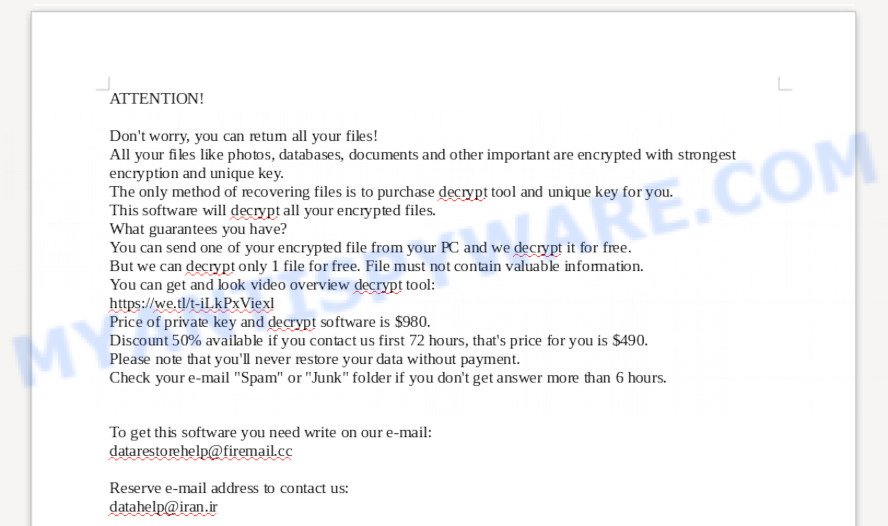
Msop virus is the 188th version of STOP (Djvu) ransomware and is very similar to its previous versions such as Zobm, Rote, Kodg and so on. Like other malicioius software from STOP family, it uses the same distribution ways (cracks, key generators, adware, activators, freeware and so on).
Upon execution, Msop creates a directory in the Windows system folder where it places a copy of itself and changes some Windows settings so that it starts up every time the PC is turned on or restarted. In order to transmit information about the infected computer, as well as obtain an encryption key, the virus establishes a connection with its command-and-control (C&C) server. If the connection was established and Msop virus received a key, then this key will be used to encrypt files located on the victim’s computer. If the connection has not been established, then a fixed key is used. This key is the so-called ‘offline key’.
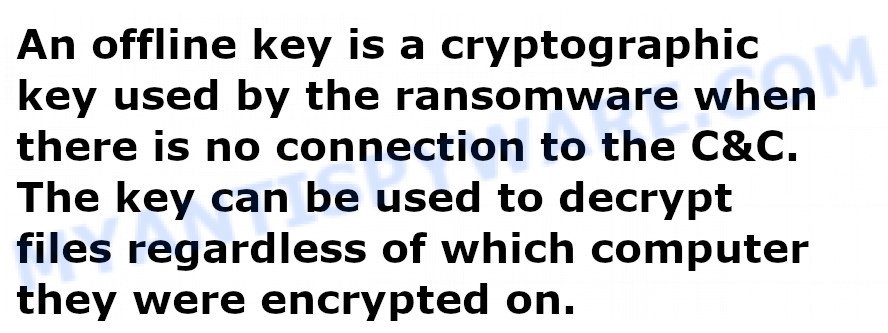
Having decided which key will be used to encrypt files on the victim’s computer, Msop virus starts encryption. In the process of encryption, the ransomware tries to encrypt files that are on all drives connected to the computer. It doesn’t matter if it is an external disk, internal hard drive, cloud storage, all data will be encrypted. The ransomware does not encrypt files that have the extension: ‘.sys, .dll, .lnk, .ini, .bat’. Msop also skips without encrypting files named ‘_readme.txt’, as well as those located in the Windows system directories. All other files, regardless of their type, will be encrypted. The following types of common files can be encrypted:
.dwg, .iwd, .pem, .bay, .tax, .sql, .map, .wmf, .hplg, .desc, .webp, .icxs, .das, .wb2, .gho, .iwi, .kdc, .xbplate, .pdd, .3ds, .m2, .vtf, .wmo, .flv, .wbmp, .ztmp, .psk, .xdb, .cr2, .wp7, .zi, .rw2, .css, .zdc, .blob, .db0, .csv, .7z, .xx, .sidd, .wsc, .layout, .mef, .ff, .dng, .xls, .xyw, .wire, .ai, .y, .m4a, .wbz, .bkf, .t13, .wpt, .wpw, .xbdoc, .vfs0, .pfx, .x, .cer, .xlsb, .xf, .orf, .m3u, .srw, .jpe, .dxg, .doc, .apk, .wot, .3fr, .big, .dcr, .js, .mcmeta, .yal, .pdf, .epk, .arw, .accdb, .wmv, .dba, .sr2, .sidn, .lrf, .cfr, .xxx, .bkp, .sis, .wcf, .rgss3a, .ncf, .zip, .itdb, .xld, .p7b, .mpqge, .rofl, .mdbackup, .wotreplay, .1st, .wmv, .svg, .t12, .xmind, .gdb, .webdoc, .ltx, .mrwref, .xwp, .wav, .sav, .hkdb, .indd, .wpd, .dbf, .rb, .x3f, .fpk, .vpp_pc, .jpg, .odb, .vpk, .odc, .lbf, .wsh, .1, .mov, .pef, .wdp, .txt, .erf, .raf, .wri, .ptx, .xlsm, .docx, .avi, .dazip, .d3dbsp, .sb, .cas, .hvpl, .mddata, .wbd, .vdf, .fsh, .py, .xdl, .vcf, .0, .bc6, .zdb, .wpa, .eps, .w3x, wallet, .xll, .pptm, .arch00, .zip, .ods, .wsd, .mdb, .kf, .der, .esm, .x3d, .wbk, .wps, .wpb, .ntl, .mp4, .xy3, .xlsx, .rtf, .p7c, .xar, .wbm, .yml, .wmd, .wp6, .itl, .pptx, .slm, .bik, .menu, .mdf, .zw, .sum, .wp, .ws, .x3f, .odm, .z, .wpg, .re4, .raw, .hkx, .forge, .rwl, .wp4, .xyp, .wps, .wp5, .sie, .wgz, .wm, .crt
Msop encrypts file-by-file. Each file that has been encrypted will be renamed, the extension ‘.msop’ will be appended at the end of its name. Thus, the virus marks all encrypted files. In every directory where there is at least one encrypted file, the virus drops a file named ‘_readme.txt’. The file contains a message from Msop creators. An example of the contents of this file is given below.
ATTENTION!
Don't worry, you can return all your files!
All your files like photos, databases, documents and other important are encrypted with strongest encryption and unique key.
The only method of recovering files is to purchase decrypt tool and unique key for you.
This software will decrypt all your encrypted files.
What guarantees you have?
You can send one of your encrypted file from your PC and we decrypt it for free.
But we can decrypt only 1 file for free. File must not contain valuable information.
You can get and look video overview decrypt tool:
https://we.tl/t-iLkPxViexl
Price of private key and decrypt software is $980.
Discount 50% available if you contact us first 72 hours, that's price for you is $490.
Please note that you'll never restore your data without payment.
Check your e-mail "Spam" or "Junk" folder if you don't get answer more than 6 hours.
To get this software you need write on our e-mail:
datarestorehelp@firemail.cc
Reserve e-mail address to contact us:
datahelp@iran.ir
Your personal ID:
0188###############################################
In this message, the authors of Msop virus report that the victim’s files are encrypted and the only way to decrypt them is to pay a ransom in exchange for a key and a decryptor. The ransom is $490, if the victim does not pay it within 72 hours, then it increases to $980. Criminals offer to decrypt one file for free, but this file should be small in size and not contain any important information. Of course, even successful decryption of one file does not guarantee that after the ransom is paid, the criminals will provide the victim with a key and a decryptor that unlocks encrypted files.
Threat Summary
| Name | Msop |
| Type | Crypto virus, Crypto malware, Filecoder, Ransomware, File locker |
| Encrypted files extension | .msop |
| Ransom note | _readme.txt |
| Contact | datarestorehelp@firemail.cc, datahelp@iran.ir |
| Ransom amount | $490,$980 in Bitcoins |
| Detection Names | TrojanWin32.Kryptik, File:Rep.Malware, TRCryptAgent, MalwareWin32: Ransom, Trojan: Encoder, TrojanRansom: Crypted, UDS.Dangerous: Object.Multi.Generic |
| Symptoms | Files encrypted with .msop extension. Unable to open documents, photos and music. Your file directories contain a ‘ransom note’ file that is usually a _readme.txt file. |
| Distribution ways | Key generators. Malicious e-mail spam. Cracks. Drive-by downloading. Torrents web-sites. Social media posts. |
| Removal | Msop virus removal guide |
| Decryption | free Msop Decryptor |
Although the message that the criminals left in file ‘_readme.txt’ is true, every victim of Msop virus has a chance to regain access to the locked data and decrypt the encrypted files for free. Emsisoft has created a free decryption tool that can help everyone. In addition to this decryptor, there are a number of alternative methods for recovering the contents of encrypted files. You can find detailed information about the process of decrypting and recovering encrypted files below.
How to remove Msop virus & Recover, Decrypt .msop files (Step-by-step guide)
We recommend using the instructions below to anyone who has become a victim of Msop virus. This step-by-step guide will help you remove the virus and decrypt .msop files for free. Read the entire manual carefully. To make it easier for you to follow the instructions, we recommend that you print it or open it on your smartphone.
How to remove Msop virus
Even if it seems to you that there is no ransomware on the computer, it does not mean anything. Msop virus may start encrypting the files again the next time you turn on or restart the computer. You must be completely sure that Msop has been removed, and also that there is no other malware on the computer. Finding and removing ransomware manually is very difficult, so we recommend using free malware removal tools. Below we provide a list of recommended utilities with brief instructions.
Remove Msop virus with Zemana Anti Malware (ZAM)
In order to find and remove Msop virus, we recommend using Zemana Anti-malware. It’s a malware removal tool from which you need to start removing ransomware. Zemana has a simple interface, a powerful anti-malware engine that makes it easy to detect and remove malware of various kinds. This tool is suitable even for a user who has minimal knowledge of computers.

- Download Zemana AntiMalware (ZAM) from the following link.
Zemana AntiMalware
165036 downloads
Author: Zemana Ltd
Category: Security tools
Update: July 16, 2019
- Close all programs and windows on your PC. Double-click the downloaded file, Follow the prompts.
- Once installation is done, click the “Scan” button to perform a system scan for Msop ransomware and other security threats.
- When finished, Zemana will open a list of found items. Review the report and then click “Next” button.
Remove Msop with MalwareBytes Anti-Malware (MBAM)
Another anti-malware tool that can help you remove Msop is MalwareBytes. It will help you completely clean your computer from ransomware. MalwareBytes is able to delete ransomware, adware software, trojans, worms, and other malware from the computer for free.
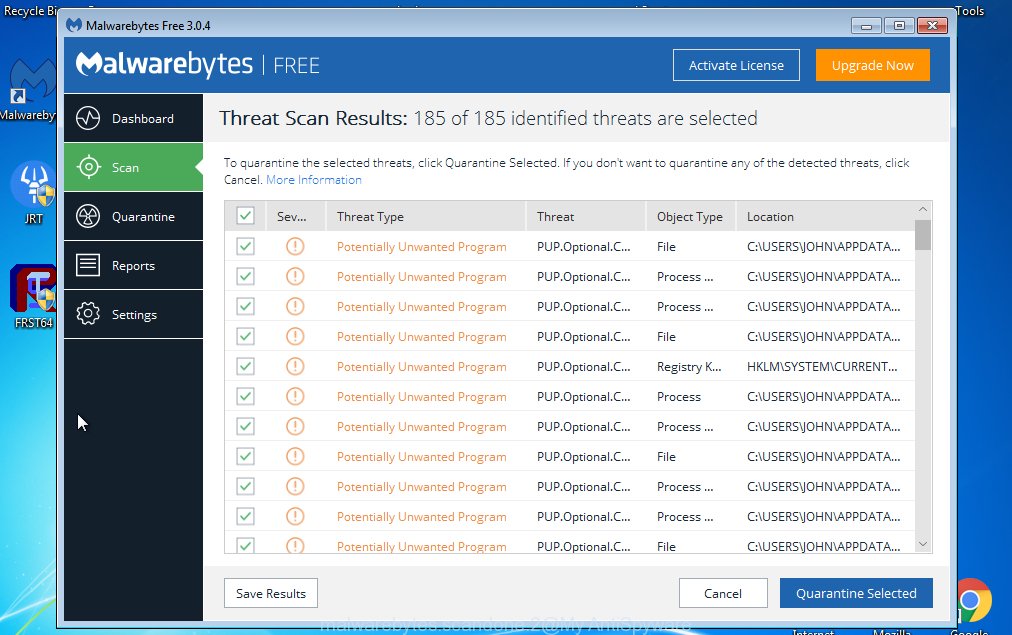
- MalwareBytes can be downloaded from the following link.
Malwarebytes Anti-malware
327265 downloads
Author: Malwarebytes
Category: Security tools
Update: April 15, 2020
- Double-click on the downloaded file, Follow the prompts.
- Once Zemana install is complete, press the “Scan Now” button to begin checking your computer for Msop ransomware and other kinds of potential threats.
- When it completes the scan, MalwareBytes Free will open a list of the found malware. Click “Quarantine Selected” button.
To learn more about How to use MalwareBytes to remove Msop virus, we recommend that you read the following guide: How to use MalwareBytes.
Remove Msop with Kaspersky virus removal tool
If HitmanPro or Zemana cannot detect and remove Msop virus, then we recommends to run Kaspersky virus removal tool (KVRT). KVRT is a free removal tool for ransomware, trojans, adware, worms and other malware.

- Download KVRT by clicking on the following link.
Kaspersky virus removal tool
129294 downloads
Author: Kaspersky® lab
Category: Security tools
Update: March 5, 2018
- Run the downloaded file and press Start scan button.
- When the scan is done, you’ll be shown the list of all detected malware.
- Review the report and then click on Continue button.
How to decrypt .msop files
All files that have the extension ‘.msop’ are files that were encrypted during the ransomware attack. Their contents cannot be unlocked without a key and a decryptor. Fortunately, a free decryptor has been created that can help you decrypt .msop files.
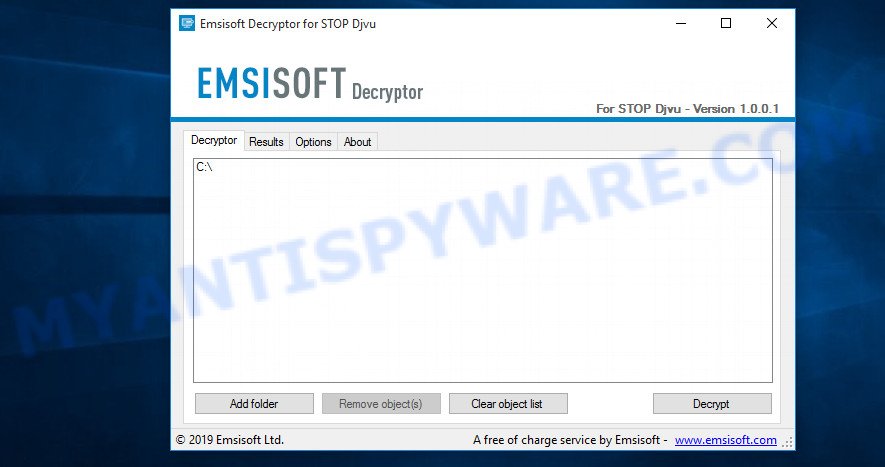
STOP Djvu decryptor
To decrypt .msop files, use free STOP (Msop) decryptor
- Download STOP (Msop) decryptor from the following link.
STOP Djvu decryptor - Scroll down to ‘New Djvu ransomware’ section.
- Click the download link and save the decrypt_STOPDjvu.exe file to your desktop.
- Run decrypt_STOPDjvu.exe, read the license terms and instructions.
- On the ‘Decryptor’ tab, using the ‘Add a folder’ button, add the directory or disk where the encrypted files are located.
- Click the ‘Decrypt’ button.
If STOP (Msop) decryptor skips encrypted files, saying that they cannot be decrypted, then these files are encrypted with an online key. Unfortunately, at the moment, this decryptor can only decrypt files encrypted with an offline key.
How to find out which key was used to encrypt files
There are two ways to determine the type of key that Msop virus used to encrypt files. First of all, you can look at the personal ID that is given in the ‘_readme.txt’ file (ransom note).
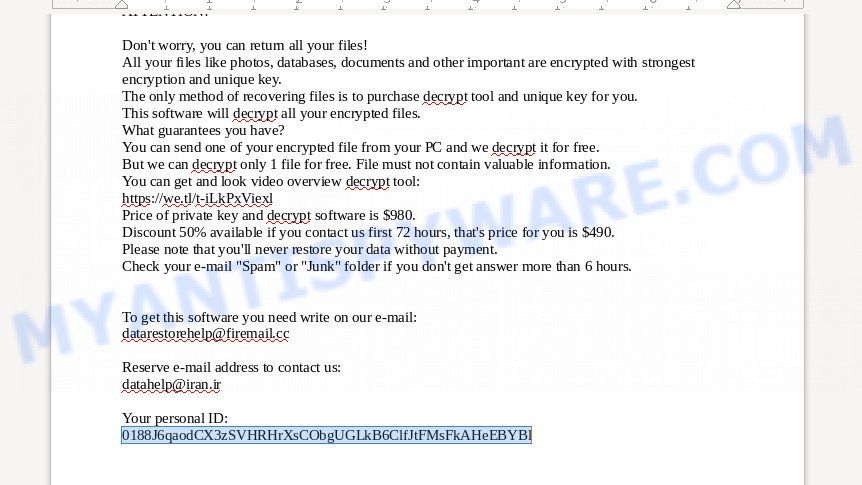
Personal ID is highlighted here
Another way, look on disk ‘C’ for ‘SystemID\PersonalID.txt’ file. This is a file in which Msop virus stores the Personal IDs used for encryption.
The ‘Perosnal ID’ is not a key, it is a set of characters by which everyone can find out which key was used to encrypt files. If the ID ends with ‘t1’, then the files are encrypted with an offline key. If the ID does not end with ‘t1’, then Msop used an online key. If you could not understand which key was used to encrypt the files, then we can help you. Just write a request in the comments below.
What to do if STOP (Msop) decryptor says “Error: Unable to decrypt file with ID”
If during decryption of .msop files the decryptor reports ‘Error: Unable to decrypt file with ID’, skips files without decrypting them, then two cases are possible why this happens:
- files are encrypted with an ‘online key’, in this case, you need to use alternative methods to restore the contents of encrypted files;
- files are encrypted with an ‘offline key’, but the key itself has not yet been found by security researchers, in this case, you need to be patient and wait a while, in addition, you can also use alternative ways for recovering encrypted data;
How to restore .msop files
As we have already reported several times, there are some alternative methods that give a chance to restore the contents of encrypted files. Each of these methods does not require a decryptor, a unique key, and generally does not use decryption to unlock encrypted files. We recommend everyone to try these methods to recover files that were not decrypted by a free decryptor. It is important that before proceeding with file recovery, make sure that Msop virus is completely removed. To do this, use free malware removal tools.
Recover .msop files using Shadow Explorer
Microsoft Windows has a feature called ‘Shadow Volume Copies’ that can help you to recover .msop files. A small tool called ShadowExplorer will allow you to easily access the Shadow copies and restore the encrypted files to their original state. Unfortunately, Msop ransomware can delete these Shadow copies before it starts encrypting files. Therefore, if ShadowExplorer did not help you, then try another method, which is given below.
Installing the ShadowExplorer is simple. First you’ll need to download ShadowExplorer on your PC system by clicking on the following link.
439666 downloads
Author: ShadowExplorer.com
Category: Security tools
Update: September 15, 2019
When the downloading process is finished, extract the downloaded file to a folder on your system. This will create the necessary files like below.

Start the ShadowExplorerPortable application. Now choose the date (2) that you wish to recover from and the drive (1) you want to restore files (folders) from as shown on the screen below.

On right panel navigate to the file (folder) you wish to restore. Right-click to the file or folder and click the Export button as on the image below.

And finally, specify a folder (your Desktop) to save the shadow copy of encrypted file and click ‘OK’ button.
Use PhotoRec to recover .msop files
The last chance to restore .msop files to their original state is using data recovery tools. We recommend a program called PhotoRec. It has all the necessary functions to restore the contents of encrypted files. It helped many victims recover data when it seemed like there was no more hope.
Download PhotoRec on your PC by clicking on the following link.
When the download is finished, open a directory in which you saved it. Right click to testdisk-7.0.win and choose Extract all. Follow the prompts. Next please open the testdisk-7.0 folder as shown in the figure below.

Double click on qphotorec_win to run PhotoRec for MS Windows. It’ll open a screen as on the image below.

Choose a drive to recover as shown on the image below.

You will see a list of available partitions. Choose a partition that holds encrypted photos, documents and music as displayed on the image below.

Click File Formats button and choose file types to recover. You can to enable or disable the recovery of certain file types. When this is done, press OK button.

Next, click Browse button to choose where restored files should be written, then click Search.

Count of restored files is updated in real time. All restored photos, documents and music are written in a folder that you have selected on the previous step. You can to access the files even if the recovery process is not finished.
When the recovery is finished, press on Quit button. Next, open the directory where recovered photos, documents and music are stored. You will see a contents as displayed on the screen below.

All restored documents, photos and music are written in recup_dir.1, recup_dir.2 … sub-directories. If you’re looking for a specific file, then you can to sort your recovered files by extension and/or date/time.
Finish words
This guide was created to help all victims of Msop ransomware virus. We tried to give answers to the following questions: how to remove ransomware; how to decrypt .msop files; how to recover files, if STOP (Msop) decryptor does not help; what is an online key and what is an offline key. We hope that the information presented in this manual has helped you.
If you have questions, then write to us, leaving a comment below. If you need more help with Msop related issues, go to here.




















So nice one..
Keep it up..
Please update recovery method for online key encrypted file to decryption method..
without t1
When files are encrypted with an online key, then they cannot be decrypted. You can try to recover the contents of encrypted files using the methods described above. That is, use ShadowExplorer and Photorec.
PHOTOREC THE BEST WITH ENCRYPTED MSOP FILES
Your personal ID:
0188yTllsd3MEtnoYSPJqMURrgQZhRZo4VHSS5vBcDPCiYt1n4
que tipo de clave es
0188yTllsd3MEtnoYSPJqMURrgQZhRZo4VHSS5vBcDPCiYt1n4This ID is related to an online key, so files cannot be decrypted. Try to restore the contents of encrypted files using the guide linked below:
How to recover ransomware encrypted files
Your personal ID:
0188yTllsdYygn3QWRfUaSn1Qpow96LCboULLscyfeyckEHWhC
The “0188yTllsdYygn3QWRfUaSn1Qpow96LCboULLscyfeyckEHWhC” ID is related to an online key, so files cannot be decrypted. Try to restore the contents of encrypted files using the following guide: How to recover ransomware encrypted files.